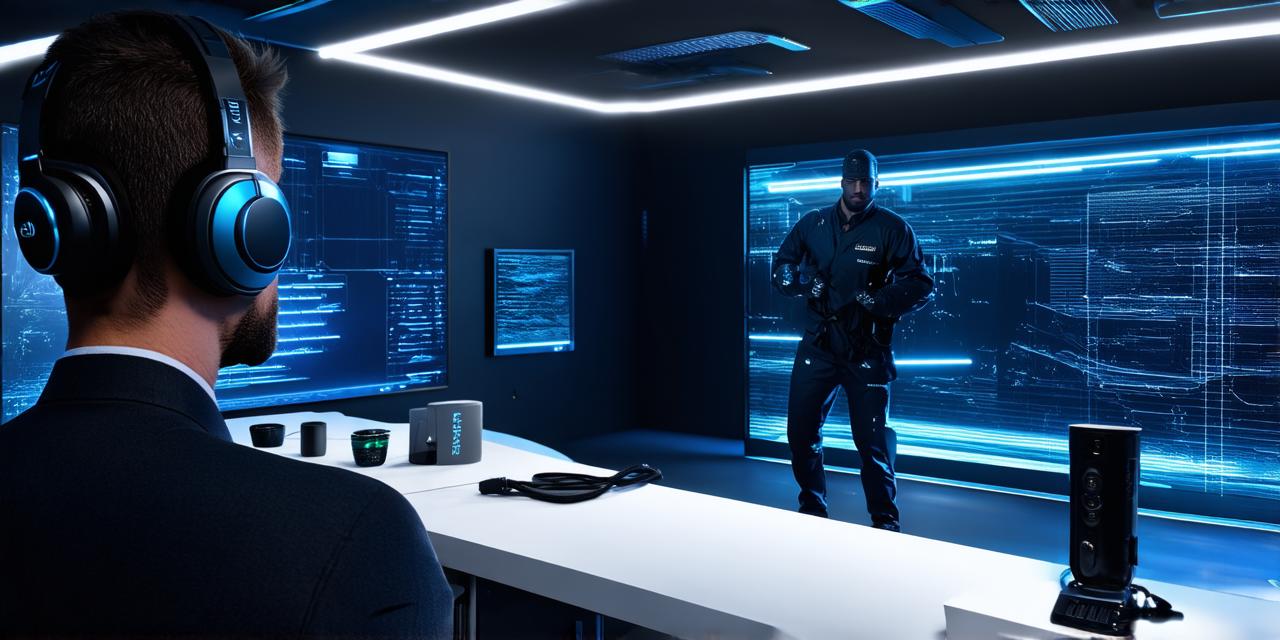<!DOCTYPE html>
Virtual reality (VR) is a rapidly growing field that offers immersive experiences to users. With the rise of VR technology, there’s an increasing demand for developers who can create engaging and interactive content using VR tools like Unity 3D.
In this article, we will explore how you can enhance VR experience with Unity 3D development.
1. Advanced Graphics Engine
Unity 3D has an advanced graphics engine that supports high-quality rendering and real-time graphics. This means that you can create stunning visuals and immersive environments that will transport users into your virtual world. The graphics engine also supports various lighting models, particle effects, and post-processing effects that can help you achieve the desired look and feel for your VR experience.
2. Interactivity and User Control
Unity 3D offers a range of interactive features that allow users to control their VR environment. These include controllers, gesture recognition, and voice input. With these features, you can create interactive experiences that require user input and response. For example, you could create a game where the player needs to use hand gestures to solve puzzles or navigate through an environment.
3. Sound and Music Integration
Sound and music are critical elements of any VR experience. Unity 3D offers advanced audio features that allow you to integrate sound effects, ambient noise, and music into your VR environment. You can also use spatial audio to create a more immersive experience by placing sounds in different locations around the user.
4. User Experience Design
Designing a VR experience is crucial for creating an engaging and immersive experience for users. Unity 3D offers a range of design tools that allow you to create interactive interfaces, design characters and objects, and prototype your ideas. You can also use various design techniques like storytelling, game mechanics, and user feedback to create an intuitive and enjoyable VR experience.
5. Cross-Platform Compatibility
Unity 3D supports multiple platforms, including VR headsets like Oculus Rift, HTC Vive, and PlayStation VR. This means that you can develop your VR experiences once and deploy them across multiple platforms, reaching a wider audience.
Case Study: Enhancing Virtual Training with Unity 3D Development
One example of how Unity 3D development can enhance VR experience is in the field of virtual training. A company called Virtual Speech Corporation used Unity 3D to develop a virtual reality simulation that allowed doctors to practice surgical procedures on virtual patients. The simulation was designed to be as realistic as possible, with detailed visuals, interactive tools, and advanced audio effects.
The simulation was tested by surgeons who found it to be highly engaging and effective in improving their skills. The immersive environment helped them focus on the task at hand, while the advanced graphics engine provided real-time feedback on their performance. The use of gesture recognition and voice input also made the simulation more intuitive and user-friendly.
The company’s CEO, Dr. Peter Weyandt, said, “Virtual reality is a powerful tool for training surgeons, and Unity 3D development has allowed us to create a highly engaging and effective simulation that has greatly improved our surgical skills.”
Expert Opinion: Enhancing VR Experience with Unity 3D Development
Dr. Richard Devine, a professor of interactive media at the University of Western Sydney, said, “Unity 3D is an excellent tool for creating engaging and immersive VR experiences. Its advanced graphics engine, interactive features, and user experience design tools make it easy to create experiences that are both visually stunning and highly engaging.”
Dr. Devine added, “One of the key benefits of using Unity 3D for VR development is its cross-platform compatibility. This means you can develop your VR experiences once and deploy them across multiple platforms, reaching a wider audience.”
Real-Life Examples: Enhancing VR Experience with Unity 3D Development
There are many examples of how Unity 3D development can enhance VR experience in various industries. Here are a few real-life examples:
- Gaming Industry: Unity 3D is widely used in the gaming industry to create 2D, 3D, and AR games for various platforms, including VR headsets. The advanced graphics engine, interactive features, and user experience design tools make it easy to create engaging and immersive games that transport players into new worlds.
- Education Industry: Unity 3D development can be used in the education industry to create virtual field trips, simulations, and interactive learning experiences. For example, a school could use Unity
